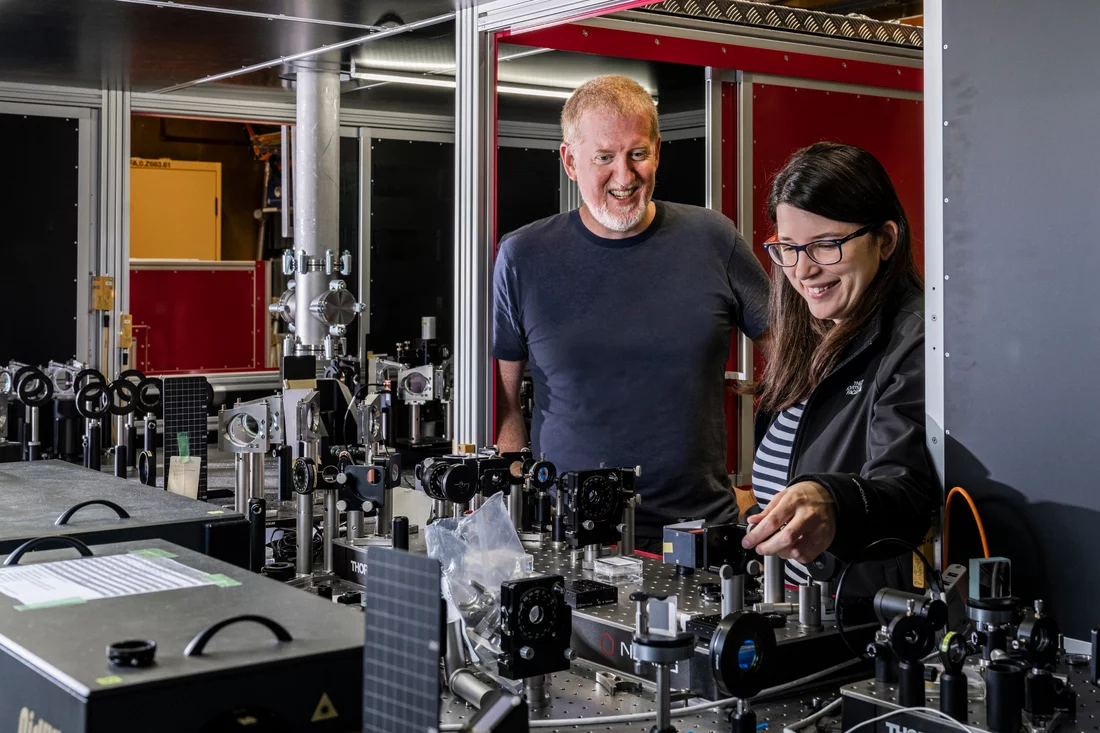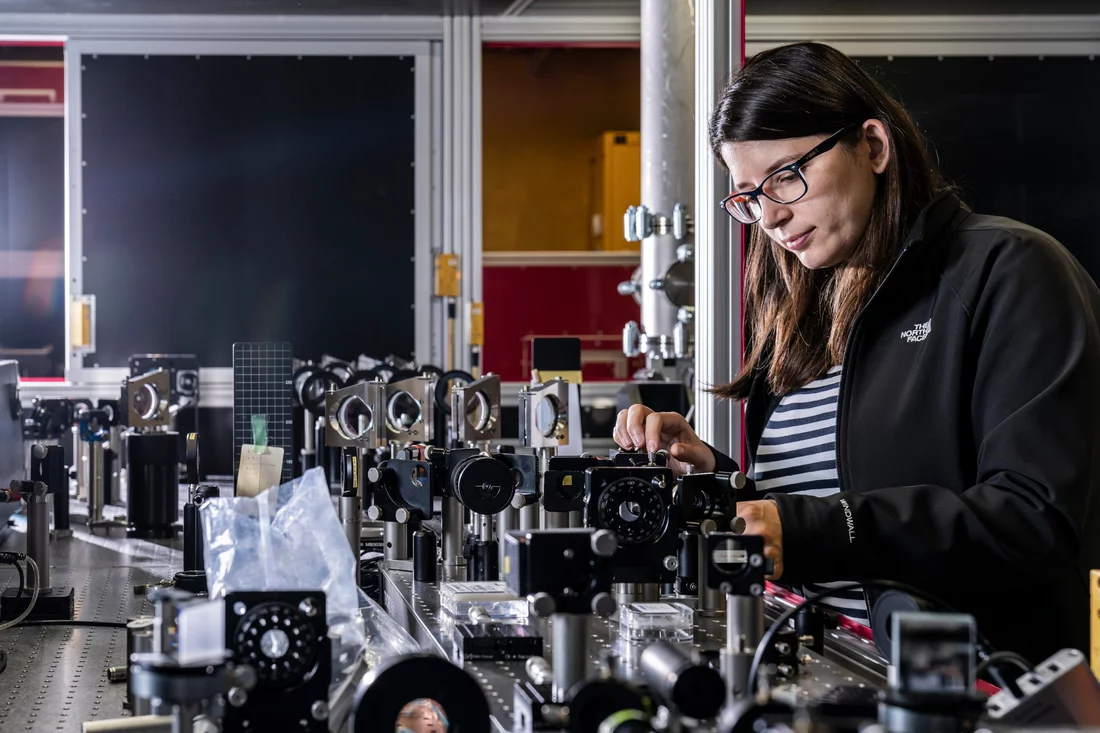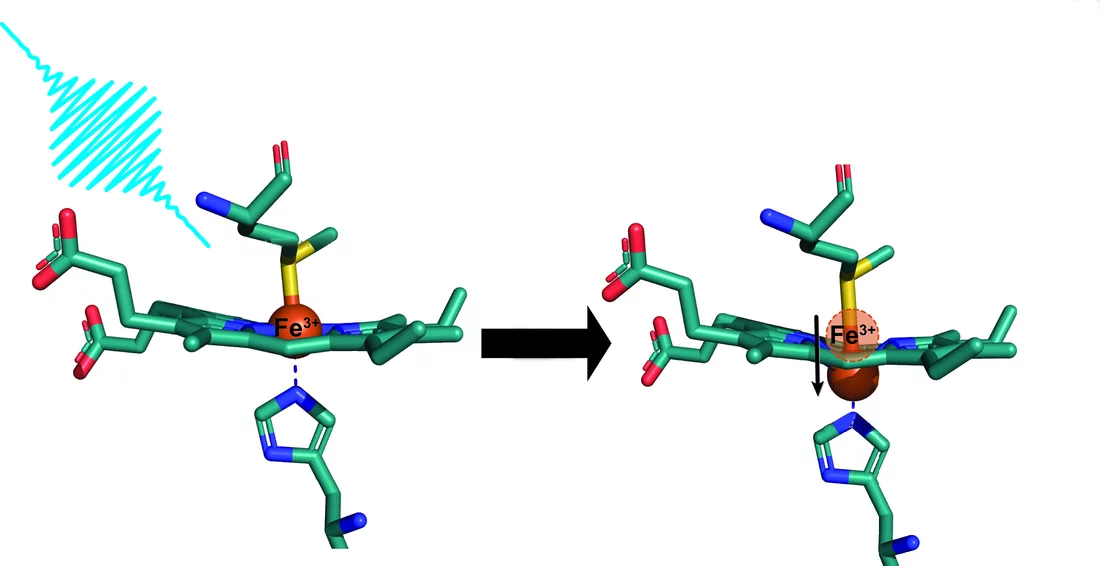Researchers at the Paul Scherrer Institute PSI and the Swiss Federal Institute of Technology Lausanne EPFL, as part of an international collaboration, have coaxed a secret out of the vital protein cytochrome c: Measurements at the SwissFEL and European X-ray free-electron lasers have shown that it can alter its structure in a way that scientists had previously ruled out for this kind of biomolecule. This new finding could help scientists achieve a better understanding of how cytochrome c functions in the cell's energy production. The study has just appeared in the journal Proceedings of the National Academy of Sciences of the USA.
Just about nothing happens without cytochrome c: This protein occurs in different variants in nearly all living organisms and ensures that we can obtain energy, with the help of oxygen, by breathing. Crucial for this is an iron atom inside the protein. It can accept and donate electrons and thus rapidly change its electronic state.
Scientists differentiate between a ferrous state, in which the iron atom carries a doubly positive charge, and a ferric state with a triply positive charge. The rapid change between these two states is critical for the function of the protein. Thus cytochrome c functions as an electron transporter and contributes to the synthesis of the cell's energy currency, ATP, in the mitochondria.
This ancient, well-established principle forms the basis of many related proteins from the haem family, such as haemoglobin, which transports oxygen in the blood, as well as myoglobin, the oxygen-binding protein in our muscles.
Arching into a dome-like curvature
It was known that ferrous haem proteins with a doubly positive iron atom in the middle – such as haemoglobin and myoglobin – could "arch" under certain circumstances: The iron atom moves above or below the molecular plane in which it is situated. Scientists call this event "doming". This structural change takes place when the molecule is excited in any way, that is, when it is supplied with energy. In the laboratory, this can be achieved simply by irradiating it with a laser pulse.
In ferric proteins with a triply positive iron atom such as cytochrome c, however, doming had never been observed. Scientists assumed that this structural change did not occur in such molecules. This assumption was wrong, though, as researchers led by Camila Bacellar of PSI and Majed Chergui of EPFL have now discovered. "Up to now, we didn't have the whole picture of what is happening in ferric proteins," says Bacellar, a former postdoctoral researcher at EPFL and now a scientist at SwissFEL and first author of the study. "We only knew half of the equation."
The researchers themselves were amazed
The researchers irradiated cytochrome c with an ultrashort laser pulse and used the X-ray pulses from SwissFEL to measure how the biomolecule reacted. Surprisingly, the measurement data showed that the protein undergoes doming before it returns to its initial state. They hadn't expected that. "We were actually looking for something else and only came across it by chance," says Bacellar with a laugh. To follow up on this unexpected result, the researchers carried out further measurements using the European X-ray free-electron laser in Hamburg, which confirmed what they suspected.
"With X-ray free-electron lasers such as SwissFEL and the European XFEL, we can take a specifically targeted look at the iron atom in the centre of the protein. An examination like this would not have been possible with any other technology," says Chris Milne, group head in the Laboratory for Femtochemistry at PSI and co-author of the study.
"The new findings show that doming is a universal characteristic of all haem proteins and is not limited to molecules such as myoglobin or haemoglobin," adds Camila Bacellar. It can be assumed that the doming of cytochrome c and related proteins also plays an important role in their function. But what this is precisely will only be revealed by further investigations.
Text: Paul Scherrer Institute/Brigitte Osterath
Contact
Dr. Christopher Milne
Laboratory for Femtochemistry
Paul Scherrer Institute, Forschungsstrasse 111, 5232 Villigen PSI, Switzerland
Telephone: +41 56 310 54 77, e-mail: chris.milne@psi.ch [English]
Dr. Camila Bacellar
Laboratory for Femtochemistry
Paul Scherrer Institute, Forschungsstrasse 111, 5232 Villigen PSI, Switzerland
Telephone: +41 56 310 42 31, e-mail: camila.bacellar@psi.ch [English, Portuguese]
Original publication
Spin cascade and doming in ferric hemes: Femtosecond X-ray absorption and X-ray emission studies
C. Bacellar, D. Kinschel, G. F. Mancini, R. A. Ingle, J. Rouxel, O. Cannelli, C. Cirelli, G. Knopp, J. Szlachetko, F. A. Lima, S. Menzi, G. Pamfilidis, K. Kubicek, D. Khakhulin, W. Gawelda, A. Rodriguez-Fernandez, M. Biednov, C. Bressler, C. A. Arrell, P. J. M. Johnson, C. J. Milne, M. Chergui
Proceedings of the National Academy of Sciences of the USA, 8 September 2020 (online)
DOI: 10.1073/pnas.2009490117
Copyright
PSI provides image and/or video material free of charge for media coverage of the content of the above text. Use of this material for other purposes is not permitted. This also includes the transfer of the image and video material into databases as well as sale by third parties.



